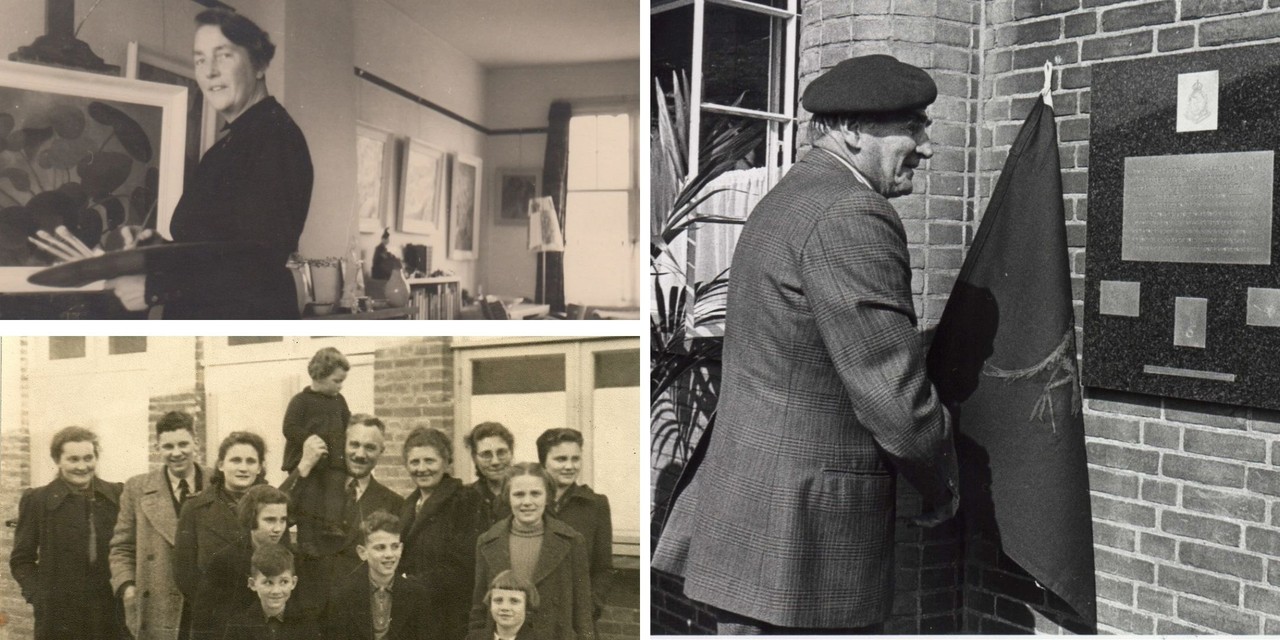The Second World War left deep scars in Gelderland, a Dutch province that witnessed fierce battles between Allied and German forces. However, these battles were not experienced solely by soldiers; ordinary people found themselves in extraordinary and harsh circumstances. Here are four lesser-known stories of individuals whose lives were profoundly impacted by the conflict.
Ru Paré: An Artist Turned Resistance Fighter
Henrica Maria Paré, known as Ru, was born in Druten in 1896 and became an established artist in The Hague. During the war, she refused to comply with Nazi orders requiring artists to register with the Kultuurkamer, a move that would have allowed her to continue exhibiting and selling her work. Instead, Ru chose to dedicate her energy to helping those at risk. Known to the 52 Jewish children she aided as "Tante Zus" (Auntie Zus), Ru arranged hiding places for them and provided food stamps, forged identity papers, and other essentials. Her old paint box was modified with a false bottom to smuggle goods to the families hiding the children. Remarkably, all 52 children survived the war. Ru rarely spoke of her actions, viewing them as a natural response to the horrors around her. In 1968, she was honoured as a "Righteous Among the Nations," a title given to non-Jews who risked their lives to save Jews during the Holocaust. She passed away in 1972, but her legacy endures, with a street in her hometown of Druten named in her memory.
Piet Hoefsloot: A Family Caught in the Crossfire
In September 1944, Piet Hoefsloot and his family lived at Eusebiusbuitensingel 59 in Arnhem. As Operation Market Garden unfolded, British and German forces clashed in the streets surrounding their home. On September 17, the family took refuge in their cellar as gunfire erupted outside. For two days, they huddled in the basement, unsure of what was happening above.
By September 19, their home and the neighbourhood had become too dangerous to stay in. Fires were spreading, and Piet decided to seek guidance from nearby British soldiers. After being advised to head to the west side of the embankment, Piet led his family, a group of 16 people, on a tense march with a white flag. They narrowly escaped being shot at near a viaduct, sheltering between the thick pillars of the bridge.
Eventually, the family found temporary safety in another cellar with other residents of Arnhem. However, they were soon forced to move again by German soldiers, who checked Piet's papers to ensure he was not disguised as a British soldier. The family managed to make their way out of Arnhem to safer ground. Their story stands as a testament to the chaos that civilians faced during the conflict.
Colonel Doctor Graeme Warrack: A British doctor behind enemy lines
Colonel Graeme Matthew Warrack was a British Army surgeon who played a crucial role during Operation Market Garden. He was parachuted near Arnhem with the British airborne forces and soon found himself overwhelmed by the large number of wounded soldiers under his care. As the fighting intensified, Warrack negotiated a temporary ceasefire with German forces to facilitate the evacuation of 450 injured men. However, he chose to stay behind with the remaining wounded troops and eventually became a prisoner of war. The Germans allowed Warrack to set up a makeshift hospital in Apeldoorn, where he and his medical team, comprised of both British and German personnel, treated hundreds of injured soldiers. In October 1944, when it became clear that Allied prisoners were being transferred to Germany, he made a daring escape. With the help of the Dutch resistance, he successfully made his way back to Allied lines in February 1945. After the war, his bravery and dedication were commemorated with a building in Apeldoorn named in his honour.
Tommy and Claude Gronert: Brothers United in Life and Death
Twin brothers Tommy and Claude Gronert served as paratroopers in the British Army during Operation Market Garden. After initially fighting in Italy, they participated in the airborne landings near Arnhem in September 1944. The brothers parachuted into Drop Zone X near Heelsum and quickly became involved in heavy fighting. During one mission, Tommy was sent on a reconnaissance patrol while Claude stayed behind to defend their position. The patrol encountered a German ambush, and Tommy was mortally wounded. When Claude saw his brother in distress, he rushed forward to help him, but he too was struck by German fire. The brothers died side by side, their courage and bond unbroken even in death. They are buried next to one another at the Arnhem Oosterbeek War Cemetery, where their mother chose the poignant inscription for their gravestones: “The winds of heaven blow softly here where those lie sleeping who were so dear to us”
